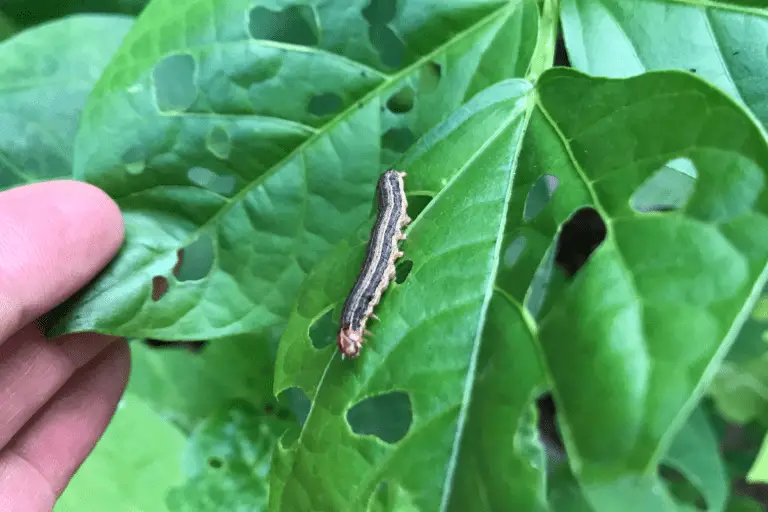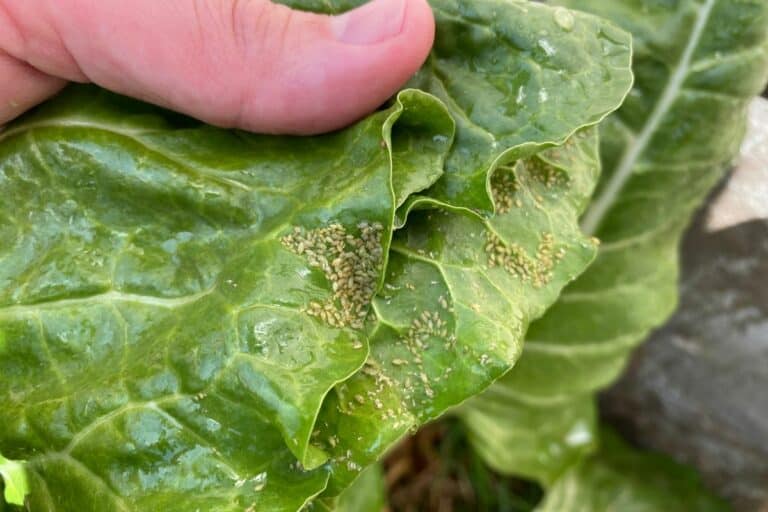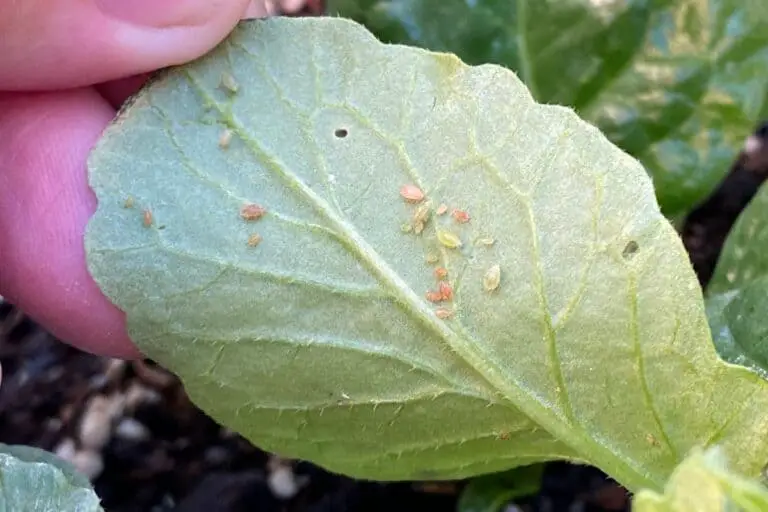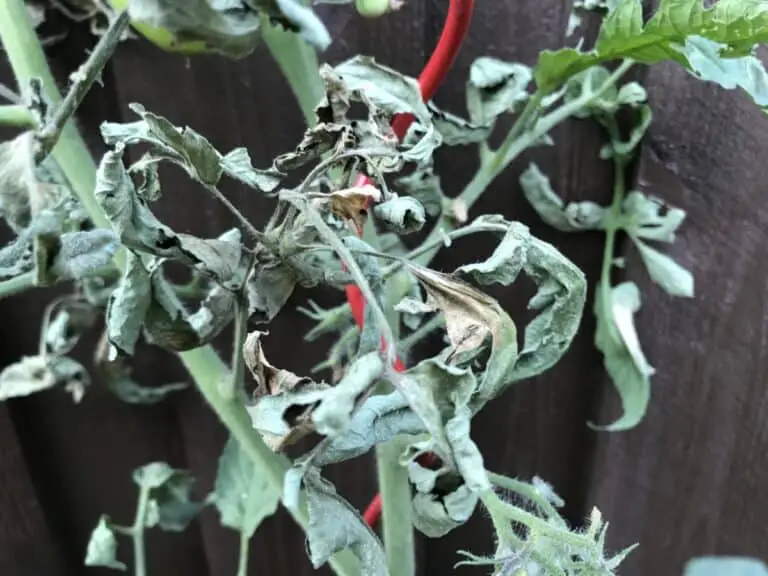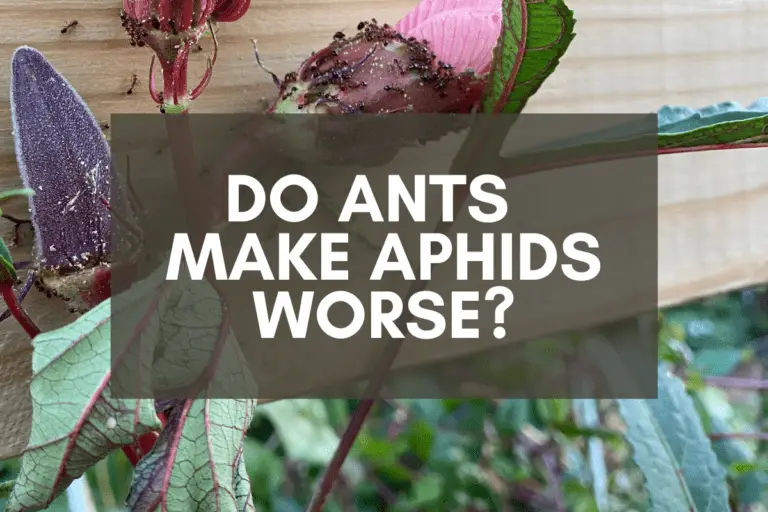6 Aphid-Eating Bugs + Tips to Keep Them in Your Garden
Say it with me fellow grower: Aphids are the worst. These irritating pests love to swoop in on thriving gardens and flourish at our expense.
If you’ve been gardening for any length of time, you’ve likely dealt with your fair share of aphids plus the destruction and paranoia they bring with them. There are many ways to rid your garden of aphids, but one of my favorite solutions is also the simplest: fight insects with insects!
In general, the best aphid-killing insects are ground beetles, hoverflies, lacewings, ladybugs, parasitic wasps, and soldier beetles. These bugs devour aphids, so care should be taken if treating infestations with insecticides since both pesticides and DIY remedies can kill off beneficial insects.
I’m nurturing produce that will support my health and wellbeing, so I don’t want to douse my plants in chemicals and other harmful solutions. I like organic DIY remedies (such as soapy water), but I’ve found that sometimes, if I’m patient and plan my garden well, that nature itself will help me fight off nasty aphids.
When it comes to killing off aphids, these beneficial insects are one of your best defenses:
- Ground Beetles
- Hoverflies
- Lacewings
- Ladybugs
- Parasitic Wasps
- Soldier Beetles
In this article, we’ll walk through various ways that you can encourage these insects to come and take up temporary residence in your garden to help with your aphid problems.
But one quick word before we do. I’ve written extensively about aphids, so after you finish reading this article, you might be interested in learning more from the articles below, which will help you better identify aphids and keep them from gaining a foothold in your garden:
- Can Plants Recover from Aphids? Tips to Save Your Plants
- Can You See Aphids on Plants? Spotting Early Infestations
- Why Do Ants Protect Aphids? 7 Things You Should Know
Now that we’ve covered a few basic things, let’s take a closer look at several beneficial insects plus some tips I’ve got for anyone who’s hoping to create a garden environment that’ll entice these bugs to come, stay for a while, and feast on aphids.
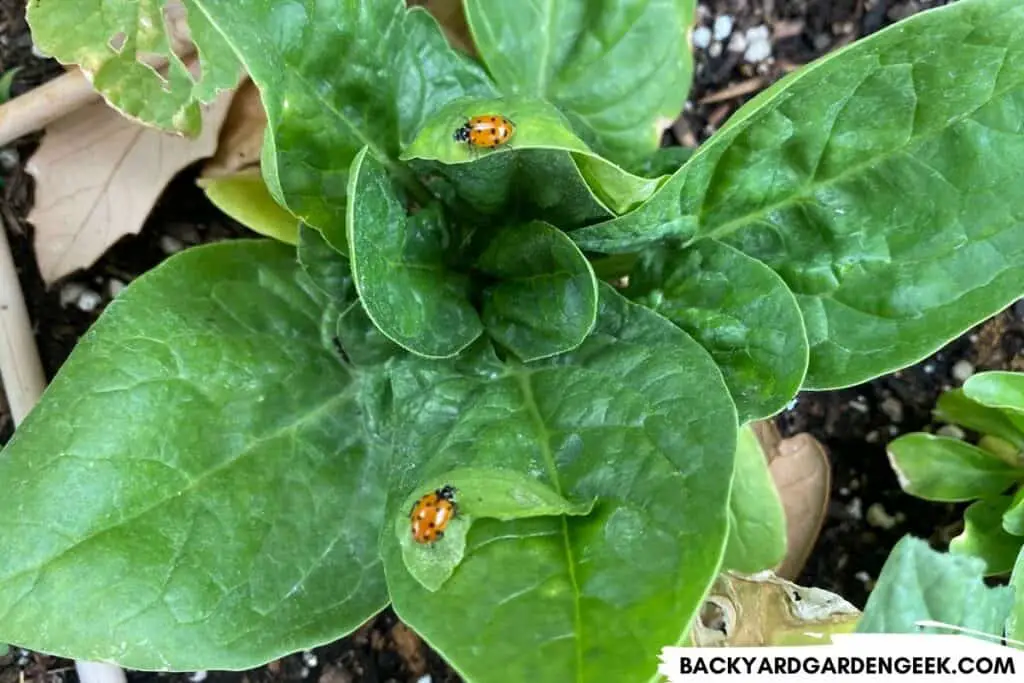
Aphid Predators: Which Insects Eat Aphids?
Aphids are destructive little pests that feed on all kinds of vegetables, fruits, flowers, shrubs, and trees. Unfortunately, there’ nearly 5,000 different aphid species spread across the world: black aphids, green aphids, yellow aphids, red aphids, even white aphids too!
Since they’re very good at spreading from place to place, aphids will eventually show up in your garden, often at least once per year (maybe even more if it’s a particularly bad year for aphids).
When they attack plants, they use special piercing mouthparts to pierce the plant and suck out its nutrients, which causes yellowing, curling leaves, stunted growth, and damaged appearance. They can even spread viruses between plants.
Unfortunately for gardeners like me, aphids can survive cold weather just fine. In fact, aphids can handle frigid winters okay as long as the temperatures don’t get too cold for too long.
Like any other living thing, however, aphids aren’t immune to predation, and there are several beneficial predators that’ll help kill them off if you can attract them to your property.

1. Ground Beetles
Ground beetles are the easiest aphid predators to keep in your garden and don’t take a lot of effort to attract. They are some of the best allies in your fight against aphids because of their durable and low-maintenance nature.
Both adults and adolescent ground beetles feast on aphis and other pesky garden foes. Unlike many other aphid enemies, these durable beetles don’t require nectar or other food sources.
While you might already have these black, iridescent beetles in your garden, you can encourage their populations to grow by providing them with more prevalent hiding places. Nurturing a thick area of wildflowers or tall grass can theoretically attract more beetles (as well as helpful pollinators) and make them feel at home in your garden.
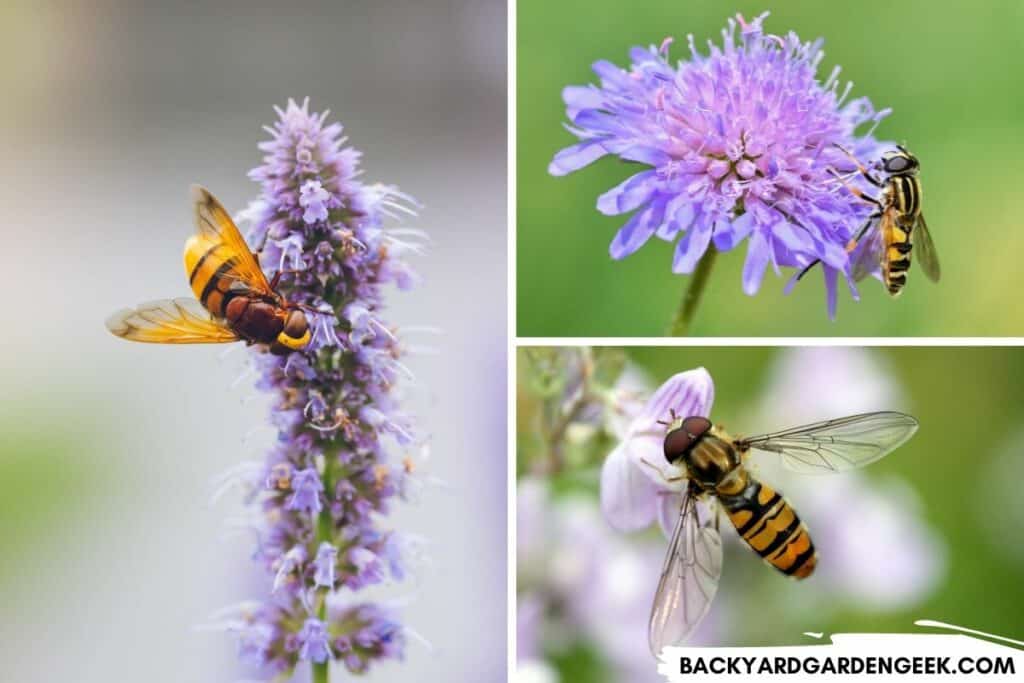
2. Hoverflies
Hoverflies, sometimes called flower flies, are often mistaken for bees because of their yellow and black pattern, size, and tendency to hover over pollinating flowers. Unlike bees, these predators do not bite or sting but are destructive to pest populations, like aphids.
Adult hoverflies float above pollinating flowers and act as effective pollinators. While adults eat nectar, larvae are very efficient aphid-eaters. Adults will lay eggs near aphid colonies so that emerging larvae can immediately start consuming.
Due to their abundance, hoverflies are relatively easy to attract into your garden. Read below for tips about attracting and maintaining aphid predator populations, and don’t forget to incorporate pollinating flowers for these pollinators.
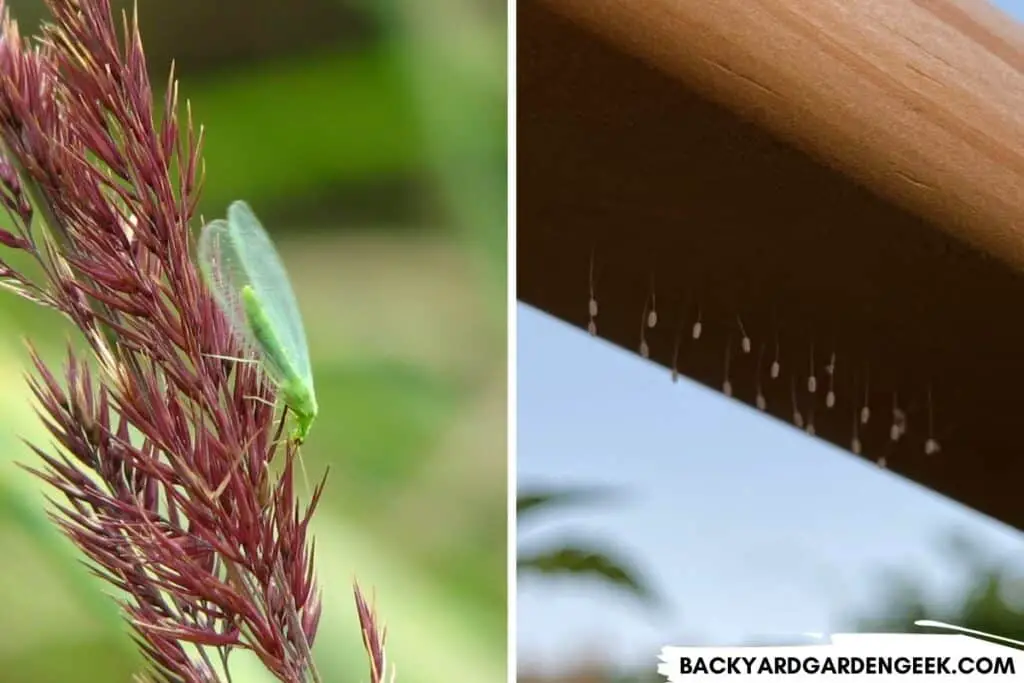
3. Lacewings
Lacewings are graceful predators that protect plants from aphids and other garden pests. Lacewings, like ladybugs, are beautiful to observe and readily available in many nurseries and garden supply stores, but are much more durable and quicker to demolish an aphid colony.
While adult lacewings mostly feed on pollen and nectar, lacewing larvae and adolescents enjoy aphids and eat hundreds during their developmental stages.
Both in larval state and in adulthood, these insects are pretty temperature tolerant and mature quickly, making them a great addition to any garden. Unlike ladybugs, lacewings hide during the day and are more active at night. Releasing lacewings early in the morning or in the late afternoon is often the best approach to take.
Much like ants, who are attracted to aphids and can actually make aphid infestations worse, lacewings are drawn to the sweet honeydew byproduct aphids leave behind and tend to lay their eggs on the scented trail near aphid colonies. To mimic this scented trail and boost your lacewing populations, try spraying sugar-water onto aphid-infested plants.
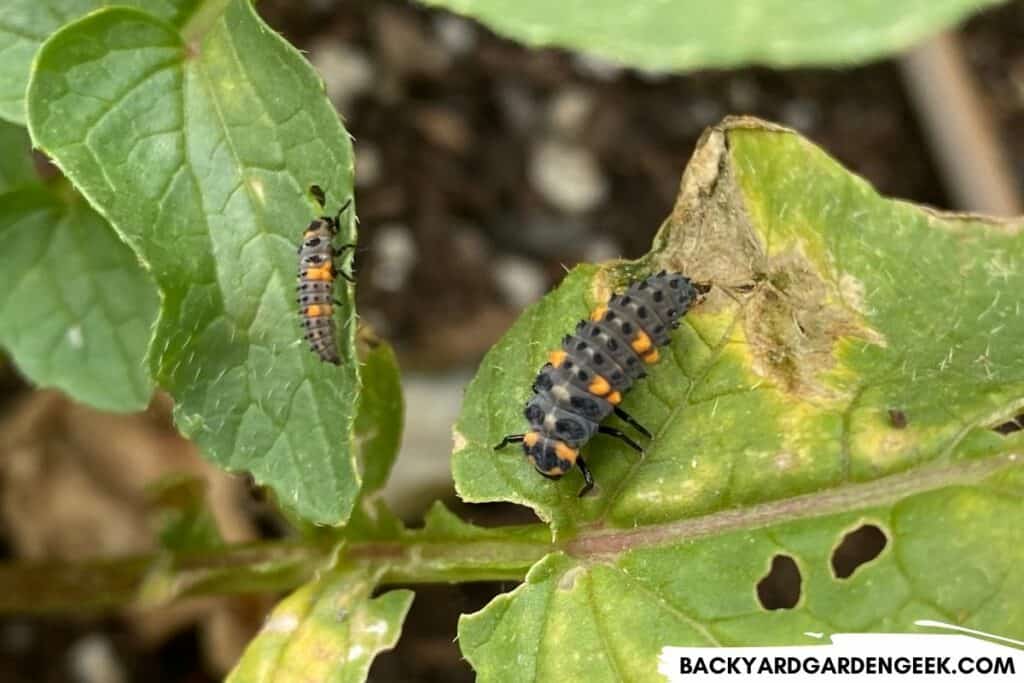
4. Ladybugs
Ladybugs, or ladybeetles, are the most popular and widely available predatory insects due to their ability to vivaciously demolish pest populations. They are also very cute and fun to observe. Adult ladybugs are notorious for feasting on small pests, like aphids and mites, and in their larval state they can eat hundreds of aphids each day!
Ladybugs are available commercially in most nurseries, but once released they will only stick around if given the appropriate environment. Releasing during evening hours is the best option since they often feast during the night. You can also try sticking your purchased ladybugs in the fridge for a few hours before releasing to slow them down.
A better approach to ladybugs isn’t buying them but attracting them to your garden naturally. Ladybugs that find their own way into your garden are more likely to stay put and enjoy the resources you provide them.
Aphids are an invasive insect species, but luckily for us gardeners, ladybugs are too, in their own way.
If you’ve got an aphid problem in your garden, don’t pull out the insecticides or DIY remedies immediately. Give it a week or so and see if ladybugs start appearing. The moment you see signs of ladybug larvae, be careful, or you might just kill them off.
And if ladybugs don’t show up, that’s okay. I’ve had tons of ladybugs this year but two years ago, for whatever reasons, they didn’t show up when the aphids showed up, so I had to take care of the aphids myself.
If you’re interested in the ways I go about doing so, check out this article on the 21 plants that aphids love to attack most and how to stop them.
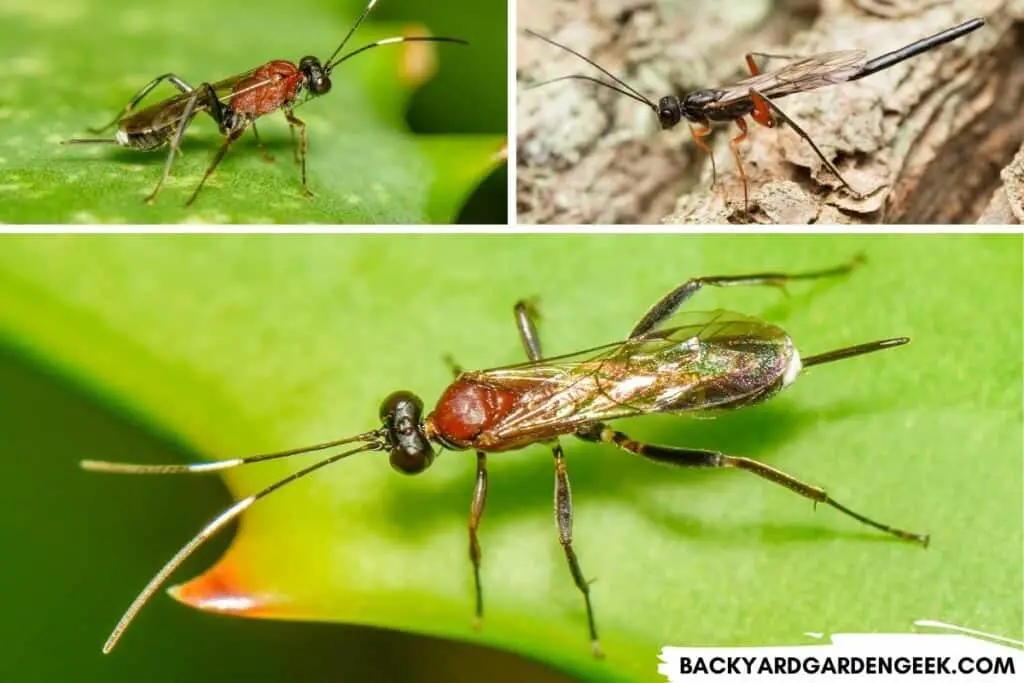
5. Parasitic Wasps
One of my favorite aphid predators are the so-called parasitic wasps (also known as parasitoid wasps). There are many different species of parasitic wasp. The bugs are usually rather small, dark, and thin–as you’ll see in this photo taken by folks at the University of Maryland–and if you know what to look for, you’ll be able to immediately tell if you’ve got them in your garden.
Here’s what I mean: Take a close look at the aphids on your plants? Do you notice any aphids that are rather bulbous and either blackish or a tannish brown?
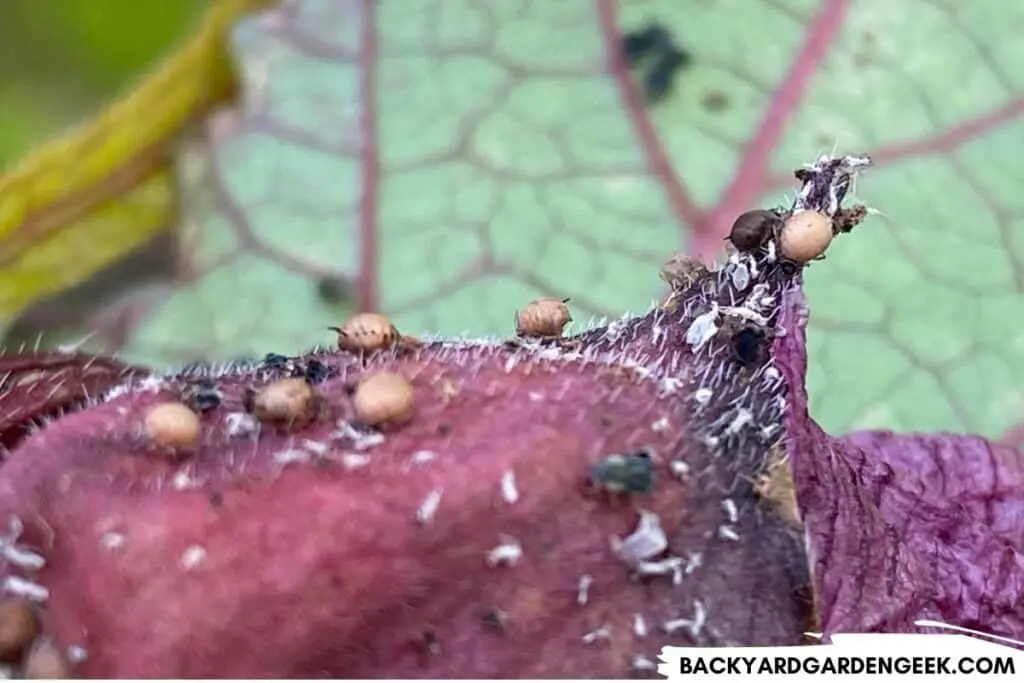
If you see any such aphids, then congrats! You’ve got helpful parasitic wasps in your garden.
What these wasps do is pretty gruesome (at least for the aphids). They’ll land on aphids and implant their eggs in them. Once the eggs hatch, the larval grub will immediately begin feeding on the insides of the aphid. As time goes on, the developing bug will turn the aphid into its own personal incubator while it pupates, then dig its way out when it’s ready to do so.
In the process, it turns the aphid into a bulbous “mummy,” the telltale sign that parasitoid wasps have been active in your garden.

6. Soldier Beetles
Soldier beetles are similar to ground beetles in durability and prevalence. They are easy to attract to your garden and make for excellent predators against aphids and other garden pests.
Soldier beetles, unlike ground beetles, vary in color, from yellow to red to brown. While they mainly feast on garden pests, they will also occasionally eat nectar and pollen. By doing this, these beetles act as effective pollinators. Soldier beetles also readily fly, allowing them to travel easily from plant to plant looking for prey.
While you likely have these durable beetles in your yard already, you can encourage larger and more effective communities by incorporating piles of leaf litter into your yard. Instead of throwing away your garden waste, store it in an untouched corner of your garden to give these predators shelter.
If you’ve got the property to do so–since you’ll want to keep leaf piles away from your house–this pile will also function as a makeshift compost bin. Over time, the beetles will make their home among the decomposing leaves, and you’ll eventually have some nice material for your garden beds.
But if you’ve got such a bin on your property, don’t put any aphid-infested plants into it unless you’re cultivating a hot compost bin. If your pile of compost doesn’t get up to at least 120℉ (48.9℃), aphids will be able to make their home among the pile, then reproduce and emerge the following season.
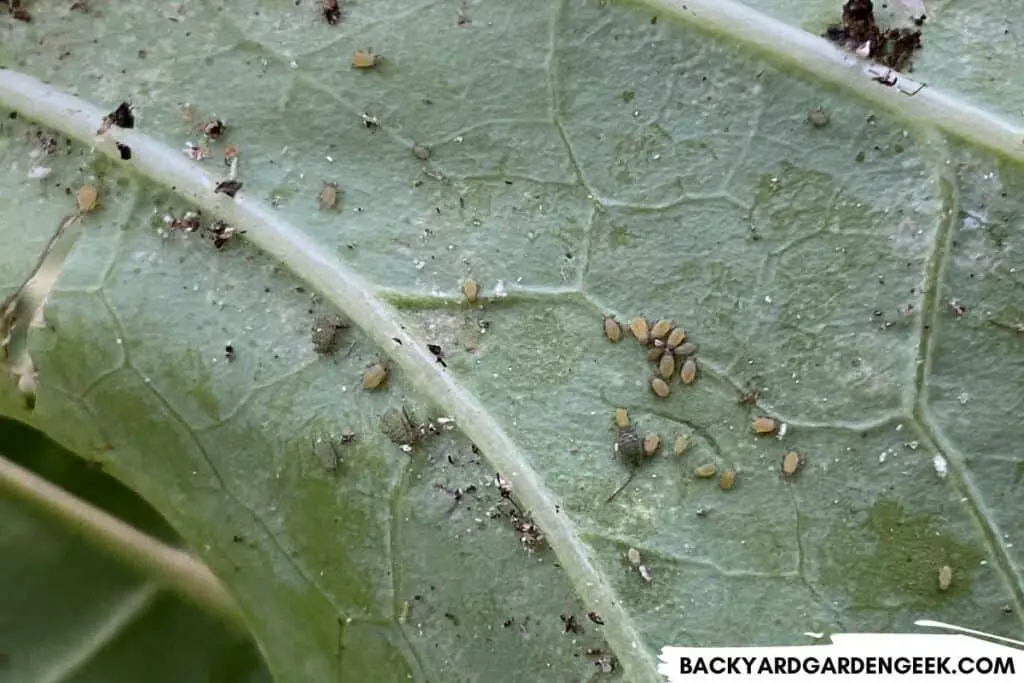
5 Tips to Keep Aphid-Eating Bugs in Your Garden
Now that you know which predators you want in your garden, how do you attract them to your yard?
Simply put, like all living things, these insects are looking for food, water, and shelter, so let’s cover some basics that you can keep in mind when planning out and caring for your garden each year.
Tip #1: Food
Most of the aphid predators I’ve reviewed above seek out food sources such as nectar and pollen, and they’ll be sure to go where the food is.
For these reasons, some of the best plants to keep in your yard to attract and sustain aphid-enemies are:
- Coriander
- Cosmos
- Dandelions
- Dill
- Fennel
- Marigolds
- Sunflowers
Parasitic wasps are also big fans of flowers (asters, daisies, yarrow, and zinnias) and herbs (anise, carraway, cilantro, dill, fennel, mustard, parsley, and Queen Anee’s lace), so I recommend diversifying your plants this year to increase the likelihood that you’ll attract as many beneficial bugs to your garden as possible.
Tip #2: Water
Unlike your furry friends, you don’t need to give your beneficial insects any water since most of them will get all of the necessary water from the pests they eat or the nectar or pollen they pick up each day, trace amounts that you or I wouldn’t notice but that the bugs are sure to enjoy.
But here’s something to keep in mind: Your plants aren’t going to be happy if you don’t water slowly and consistently, and neither will your beneficial bugs since they rely on those plants for their survival.
I find that proper watering helps ensure that my plants are at their best, which has the secondary effect of ensuring that predatory bugs have plenty of healthy plant material to live in and feed around.
You can use drip lines for this kind of slow, deep irrigation. Or, like me, you can do something as simple as connecting PVC pipes together, drilling small holes along the length of them, then connecting them to a water hose via a PVC-to-hose adapter.
I built one of these systems earlier this year for around $20 total. It works great, and it allows me to tend to my plants while they’re getting the water they need.
Tip #3: Shelter
Shelter is important for every insect that we’ve reviewed.
Sometimes that’s as easy as paying attention to your soil health so that you ensure your plants develop the necessary foliage. If you’ve never done so, I recommend contacting your local extension office (if you live in the United States) or agricultural center, then sending off a soil sample for analysis. Nitrogen deficiency is quite common in gardens and can impact the size and amount of foliage your plants produce.
Insect shelters can also be purchased or easily made to provide a safe place for helpful bugs to rest, hide, and lay their eggs, but I find that the best insect habitats are the natural ones. Areas with wildflowers, herbs, and tall grasses are a great way to give helpful bugs a natural place to seek shelter and reproduce.
The same can be said for companion planting since biodiversity will increase the likelihood that you’ll attract helper insects. If you mix things up in your garden instead of planting all of the same variety side by side year after year, you’ll create buffer zones between plants that’ll help cut down on pests’ ability to easily migrate from plant to plant.
Tip #4: Be Careful with Insecticides
Although I typically avoid chemical pesticides, I’m a big fan of the strategic, selective use of natural products and organic DIY remedies.
I like soapy water sprays, and I’ve found that natural bacterias such as those found in Bacillus thuringiensis spray (commonly referred to as BT spray) are a huge help when it comes to caterpillars.
I’ve also written extensively about one of my favorite natural insecticides: neem oil. Here’s a sampling of those articles in case you’re interested:
- How Long Does It Take for Neem Oil to Kill Bugs?
- Neem Oil Plant Burn: Why It Happens + How to Avoid It
- Using Neem Oil to Kill Spider Mites: A Complete Guide
- Why Do Insects Hate Neem Oil? 12 Secrets to Its Success
- Will Neem Oil Kill Pollinators or Other Beneficial Insects?
When it comes to aphids, you’ll need to weigh the pros and cons of using store-bought or DIY insecticides, such as soapy water or neem oil sprays, to fight aphid infestations:
| Pros | Cons |
|---|---|
| They’re relatively cheap. | They can kill off beneficial bugs. |
| They’re fairly effective. | They aren’t 100% effective. |
| They begin working immediately. | They can damage plants if applied improperly. |
When I say that they’re not “100% effective,” what I mean is that soapy water and neem oil (among other available products) are great at keeping aphid populations from getting out of control, but they’ll never prevent aphids from arriving in the first place.
And with some aphid infestations, if you’re not super consistent and aggressive when it comes to spraying your plants with soapy water or neem oil, the aphids will continue to reproduce and hang around your garden.
Finally, if you see any beneficial bugs (such as ladybug larvae or lacewing eggs), I’d recommend not spraying your plants with anything to see if nature will do the work for you. If ladybug or lacewing larvae get sprayed (even with something as simple as soapy water), they’ll die, and that’s the last thing you want if you’ve got an aphid infestation!
Tip #5: Prevention
Once your garden is clear of aphids, you’ll want to think about ways to support your predatory army. If you keep the beneficial predators happy, they’ll do more than any chemical pesticide or organic insecticide when it comes to protecting your garden from future pest invaders.
Make a list of plants that attract natural predators, then plan out your garden with these plants in mind. Plant them around the perimeter of your garden and intersperse them among your garden plants.
Pesticides and insecticides are primarily reactive approaches. You use them after the pests have already arrived. If you can create a garden space that’s biodiverse and attractive to predatory bugs, you’ll be taking a proactive approach to keep aphids and other invasive insect pests out of your garden.
Do Ants Eat Aphids?
Where you find aphids, you’ll likely also find ants.
A common misperception is that ants follow aphids because they eat them. This is far from the truth! Ants don’t eat these tiny pests, although they’ll occasionally kill off weaker aphids or engage in selective culling to ensure that aphid population levels remain at desirable levels.
Simply put, ants love to feast on the honeydew droplets that aphids leave behind as the byproduct of their feeding patterns. Aphids feed on the sap from your garden plants, then produce something called honeydew.
Honeydew is exactly what it sounds like: sweet. This sugar-rich substance attracts ants, which is why you may see a trail of ants following in your aphids’ footsteps. To thank them for their food source, ants will often protect aphids from predators, creating a symbiotic and destructive relationship for any beneficial predators that try to intervene.
If you see ants among your aphids, you’ll want to act fast. Aphids don’t pollinate plants, and they’re generally destructive no matter what plants they’re inhabiting, so if you’ve got aphids and if those aphids are being protected by ants, I recommend pulling out a soapy water spray, finding the worst clusters, then spraying them well with soapy water.
I share my soapy water recipe in this article on the 21 plants that aphids love most. Just follow the simple instructions, and you’ll have a helpful organic spray for your garden!
Do Wasps Eat Aphids?
Parasitic wasps are another aphid predator but for a completely different reason. As I noted above, rather than simply eating aphids, parasitic wasps use them for protection, as well as a food source for their young.
Parasitic wasps are tiny, black insects that detect aphid colonies by the sweet honeydew smell. Once they find an aphid colony, they’ll inject an egg into an aphid and leave the young to develop inside.
As the wasp larva grows and develops, it feeds on the aphid (hence the name “parasitic”) until all nutrients are gone and the aphid is mummified. The wasp then burrows out, leaving the demolished aphid behind.
Additional Information
I’ve been battling aphids ever since I started gardening. If you’d like to read more about what I’ve learned over the years, I recommend these additional articles:

